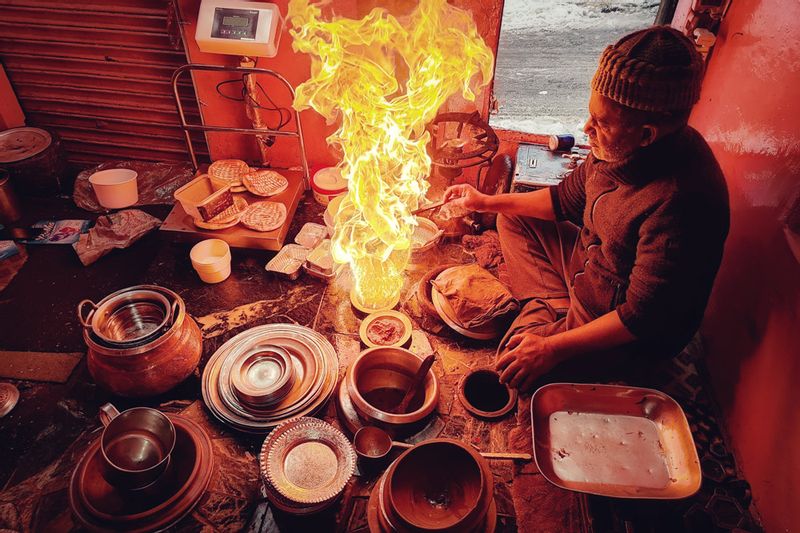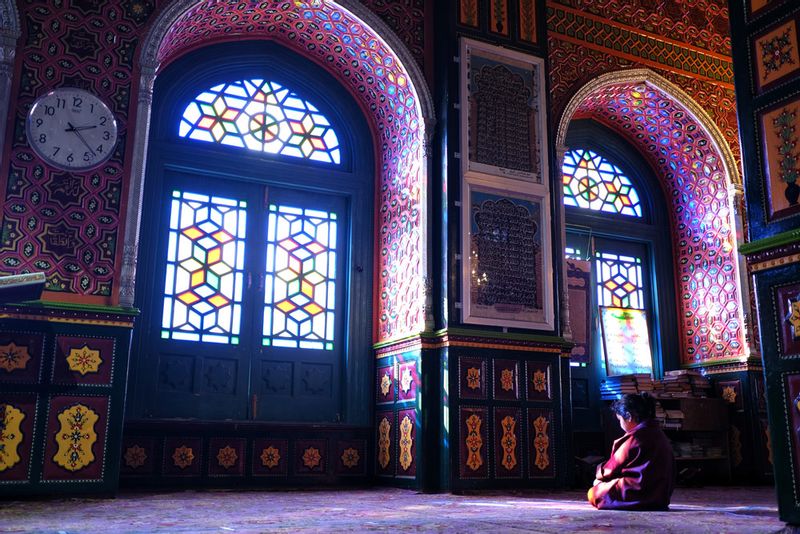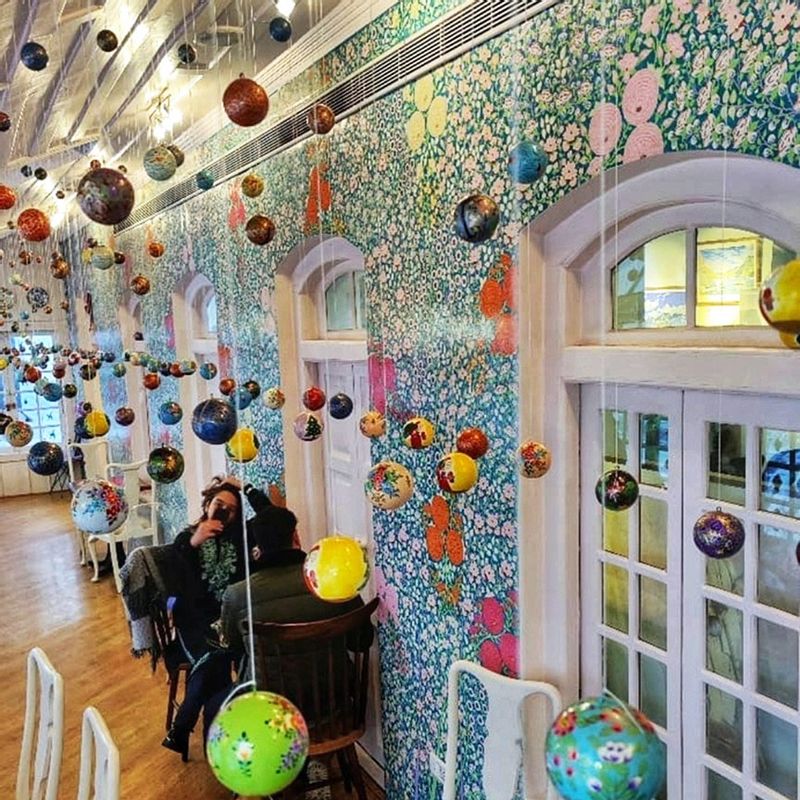If your gram isn't bursting with pictures of your friends and fam skiing down the snow-clad slopes of Kashmir, have you even made it to 2021?
According to reports, with the sheer volume of tourists arriving in Jammu and Kashmir in the last three months of 2021, since the snow fall began, the valley is set to break the record of last three years. Now if you are too late to make the bookings for your ski expedition this winter, here's the perfect Kashmir itinerary that will have you come back the next season. While thousands visit the picturesque Kashmir valley through the year, not many spend enough time to do justice to the gem that the city of Srinagar is.
On landing at the Sheikh ul-Alam airport, most spend only a day or two in Srinagar before they head off to the snow-clad meadows of Gulmarg and Pahalgam or embark on a long road trip to Ladakh, managing to tick off the most famous and photographed spots on the tourist map.
Beyond the Mughal Gardens of Shalimar and Nishat, a short boat ride on the Dal lake, a momentary glimpse of the hallowed Hazratbal Dargah and the twin spots Pari Mahal and Chashme Shahi, the other historic and beautiful parts of Srinagar remains largely unseen and unexplored.
Next time you happen to be in Srinagar, try something that is out of the ordinary.
1. A shikara ride into the India’s very own floating market
Shrug off the laziness and wake up well before dawn. Head straight to the Dal and take a 60-minute shikara ride through the local canals to Zujilangkar in Rainawari in the innermost areas of the lake to watch vegetable traders on small canoes buying and selling their produce on the floating vegetable market. While not as big as the world’s other famous floating markets -- Cai Rang in Vietnam and Damnoen Saduak of Thailand -- it’s an adventure to see about five dozen boatmen haggle and bargain for tomatoes, cucumbers and nadru (lotus roots, a local delicacy). Most of the vegetables are grown on the floating algae and leaves and do not touch the ground till they are plucked.

The floating market can be elusive – these traders gather before dawn and disappear in an hour as soon as the sun rises. Within minutes, there is no hint left that the market ever existed. So make sure you reach around 5 am in the summer months and by 7am in winters.
2. A decadent breakfast at Ali Kadal
From Rainawari, a short auto ride (about 3km) will take you to Ali Kadal (Kadal means 'bridge' in Kashmiri). Every year, as autumn nears the end, Zahoor Ahmed Bhat opens his small hole-in-the wall shop and starts preparing Harissa, a local breakfast delicacy made of lamb meat that makes the freezing winter morning a pleasure to experience.

Zahoor, a fourth-generation Harissa cook in a family that has been in the business for than 150 years, takes a full night to prepare the high-calorie dish, several hours going into separating the meat from the bones, mincing it with rice and cooking it with fennel seeds, garlic, cinnamon and cardamom. Once the preparation is taken off the wood fire after 10 hours, it is garnished with a ladle-full of burning mustard oil and served along with tsot (Kashmiri roti) and noon chai (salted tea). While the aroma and taste of the dish is enticing, Zahoor himself advises his customers to refrain from the third helping – an urban legend has it that centuries ago, an Afghan governor of Kashmir liked the dish so much that he over-ate it to death. Zahoor opens his shop around 5 am and once he exhausts his stock serving the long queues of locals and sending over packed harissa to families across Srinagar, he shuts shop well before 9 am.
Those visiting Srinagar in summer will not get an opportunity to hunt down this Harissa and have to make do with other regular breakfast – Kashmiri bread with eggs or halwa – at small stalls across the neighbourhood.
3. Making a wish at the Sufi shrines
If you have ever scrolled down any Kashmiri’s Instagram wall, you have probably seen a glimpse of Khanqah-e-Moula, the first mosque that was built in the valley. Constructed in 1395 in the memory of Mir Sayyid Ali Hamdani, who is credited to have brought Islam from Persia to the Valley, the mosque has withstood the test of time, surviving a few devastating fires over the centuries.

Forget the controversy — some historians say a Kali temple was demolished to build the mosque — buy some corn outside and feed the thousands of pigeons that walk the courtyard of the mosque. Speak with the kids who call the mosque their home before you walk around it and find the calm Jhelum flowing alongside. Spend a few minutes or hours inside, on the magnificent carpets amid the majestic pillars under the grand chandeliers. Do not forget to make a wish… mine has come true. Getting out, you may want to walk a few hundred metres across Zaina Kadal to Patthar Masjid for a majestic view of Khanqah from across the Jhelum. Do not get unnerved by the sight of army men with automatic guns and walk another mile to Dastgeer Sahib. Built 215 years ago, it does not have a very long history like Khanqah, though this too was ravaged in a fire in 2012. The colourful stained glass windows and the historic books make for wonderful pictures, the calm and peace you find inside is only a bonus.
4. Walking and shopping in Sheher-e-Khaas
As you roam between the shrines of the Old City, also known as Sheher-e-Khaas and Downtown, take some time to shop like the locals do. The 70-odd localities inside Downtown – the city’s most densely populated area, accommodating almost 60% of its population -- is known for copperware and you’ll find fabulous glasses, samowars (traditional jugs), tramis (plates) with intricate carvings at prices that you would not believe. Most of these are handmade in little workshops set up inside people’s homes.
Downtown is also known for impeccably crafted silverware, leather products — bags, purses, jackets caps — and factories and wholesale dealers of dry fruits, saffron, spices, shawls, carpets, papier-mache, and all these are available at far lesser prices than you would pay at touristy shops near the Dal or along Residency Road.
5. Snacking at the cool cafes

The long walk and shopping spree will do well to settle the morning’s Harissa binging and early afternoon would be a perfect time to visit one of the cool cafes around. The city may not have a bustling nightlife, but the cafes and tea rooms more than compensate for it. Srinagar boasts of an eclectic mix of cafes—from the quaint to the themed. There is the picture-postcard Chai Jaai, an Insta hotspot tearoom with vibrant décor, exquisite tea sets, on the Bund along the Jhelum. Try the Himalayan trout for a late lunch or go for Harissa if you missed it at Ali Kadal. Even if you are not hungry, go for sheermal (a saffron flavoured traditional bread served with seasoned dates) and kehwa (kashmiri tea) poured from steaming hot samovars.
For web series fans, Game of Thrones meets Kashmiriyat at Winterfell Café across the Dal. The brightly painted interiors are adorned with GoT-related posters and artwork and it even has a life-size Iron Throne that you could pose on. Cersei would have loved this place in the north!


